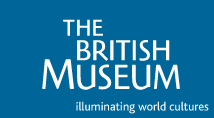


Clothing the Pacific: a Study of the Nature of Innovation
Clothing the Pacific: A Study of the Nature of Innovation
CLOTHING THE PACIFIC investigates what textiles and dress make manifest about change in a region. Investigation into the nature of material innovation and social creativity has been the starting point to compare transformations of clothing and social relations in the Pacific since the advent of colonialism.
The Pacific is famed for the diversity and coherence of overlapping organisations of tattooing, body art and pattern, often carried by textiles such as barkcloth and mats.
The project is documenting historical shifts in the use of cloth in the Pacific, and investigates relations between textile technologies, pattern systems, knowledge and social production.
Project Aims
· To produce a new dialogue between museum collections, historical research and comparative ethnographic studies, contributing to an enriched understanding of textile and clothing traditions in the Pacific.
· To research contemporary responses to Western and Asian textile products and the social and cultural ramifications of these innovations.
· To develop a new analysis of innovation in textile and clothing technologies and material culture.
The researchers are carrying out a series of comparative case studies that
will document and interpret shifts in the past and present use of textiles
in the Pacific.
Project Development
· PHASE I: THE CONSUMPTION OF CLOTHING
Research into the period of conversion into Christianity with attention
to archives, collections and photographic records. Initiation of clothing
and textile bibliography, field research projects and project collection.
· PHASE II: MATERIAL TRANSLATION
Synthesis and analysis of fieldwork and archival research data. Continuation
of project collection.
· PHASE III: CLOTHING PRODUCTION
Dissemination of research findings and the development of a spatial-temporal
map that brings together acts of material translation defining contemporary
pattern and clothing systems in the Pacific.
Case Studies
Pattern in the Pre-Colonial Pacific and the development
and transformation of Polynesian tivaevae. Susanne Kuechler
Large and elaborate appliqué quilts, known as tivaevae, tifaifai,
kapa lau, have been produced by women in the Cook Islands, the Hawaiian
and Society Islands, and elsewhere in eastern Polynesia since their introduction
by missionary women in the early nineteenth century. In eastern Polynesia
tivaevae were substituted for barkcloth and used in novel ways. Kuechler
is addressing the unresearched history of quilting in Polynesia against
a comparative enquiry into why barkcloth was abandoned in some Polynesian
societies and not others. Fieldwork in the Cook Islands and Pacific Islander
communities in New Zealand explores the contemporary significances of tivaevae.
Women, gender models and dresses: the indigenisation of
a European introduction. Lissant Bolton
In introducing Christianity into the Pacific, missionaries also introduced
nineteenth century European codes of propriety and dress. The Vanuatu 'island
dress', Hawaiian mu'u mu'u and the Papua New Guinea 'meri blouse' are examples
of the way Pacific women modified these dresses in locally specific ways.
Bolton focuses on the selective appropriation of the 'island dress' in Vanuatu,
and the impact of dresses and their subsequent modifications on female gender.
Fieldwork in Vanuatu investigates contemporary perspectives on their history
and relationship with Christianity.
Transformations of barkcloth and clothing on Niue. Nicholas
Thomas
Conversion to Christianity on Niue in the latter half of the nineteenth
century provides a localised case study of mediated change in textiles and
clothing. The link with innovations on Samoa, particularly the Tahitian
poncho and adapted forms of Niue barkcloth is being investigated to analyse
the relations between introduced garment forms and new social forms linked
to Christianity.
Migration and the translation of barkcloth and clothing
in the Pacific Diaspora. Chloe Colchester
The period of conversion to Christianity in Fiji saw the expansion of pattern
systems, primarily figured upon barkcloth. Colchester compares historical
innovations in indigenous cloth complexes and current transformations in
clothing in Fiji and Fijian diasporic communities. Fieldwork in Fiji, Tonga
and communities in Sydney compares the relationship between historical and
contemporary appropriations of cloth and contemporary responses to material
innovations in fabric and clothing.
Pattern, efficacy and enterprise: a study of printed calico
in Melanesia. Graeme Were
While historical evidence points towards the introduction of calico as an
inspiration for Melanesians to adopt new modes of dress, no consideration
has been given to the selective utilization of patterned calicoes brought
into the region by Europeans. Were is exploring museum collections, photographic
archives and archival records in order to document the material qualities
of printed calicoes and their relation to local forms identity and power.